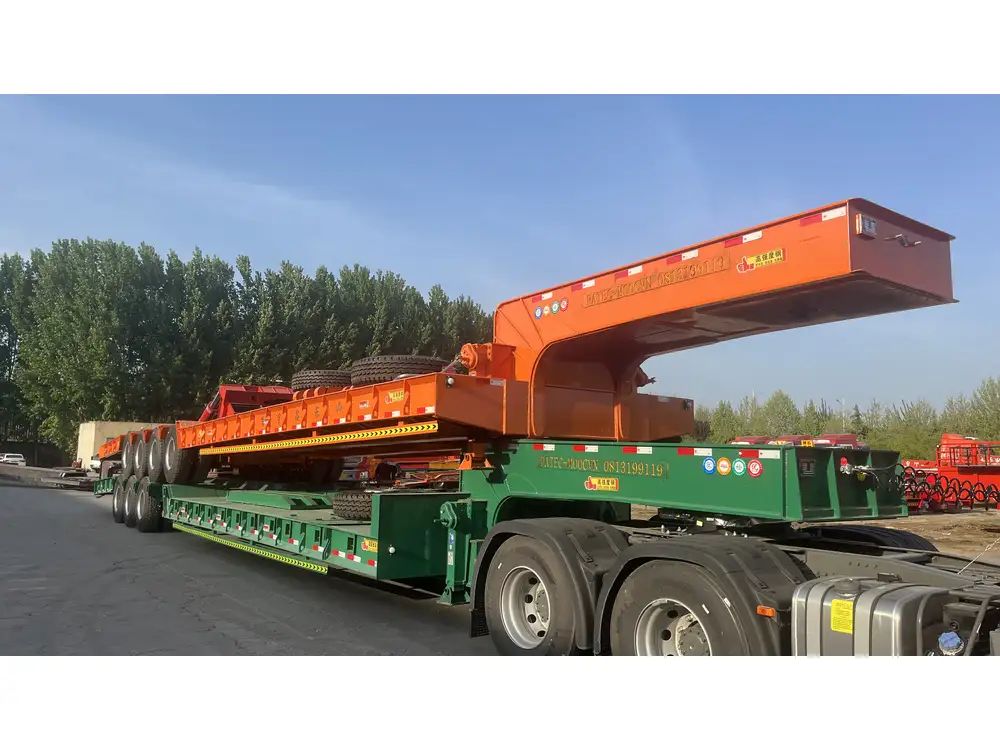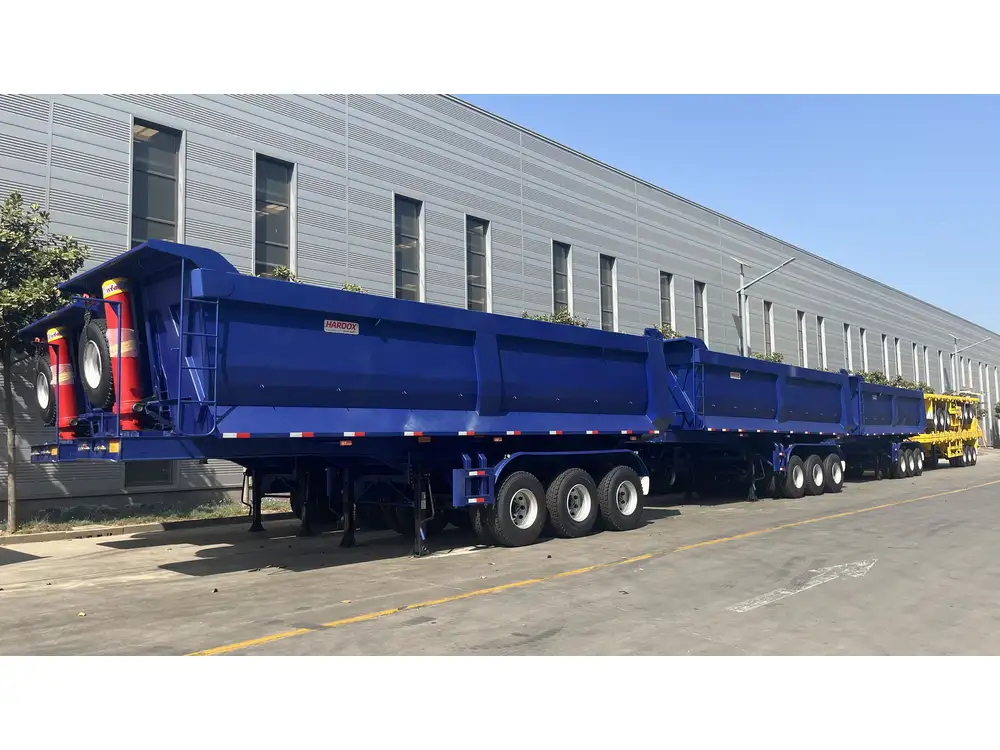When considering a trip to Key West with a semi truck equipped with a 53-foot trailer, numerous factors come into play. This guide will explore the intricacies of transporting a semi-trailer to Key West, addressing key concerns, regulations, and the logistics involved in successfully navigating this unique destination.
Understanding Key West’s Geography and Access Points
The Route to Key West
Key West is the southernmost point in the continental United States, situated in the Florida Keys. Reaching this island paradise requires traversing the scenic Overseas Highway (U.S. Route 1), which connects the islands and is known for its breathtaking views.
Entry Points:
- Mainland to the Keys: The most common access point is through the Florida mainland, typically via Miami or Fort Lauderdale.
- Highway Specifications: The Overseas Highway is equipped with bridges linking the keys, including the famous Seven Mile Bridge.
Road Conditions and Limitations:
- Lane Width: The highway’s lanes are generally adequate for oversized vehicles, but tight spots and sharp turns can pose challenges.
- Height Restrictions: Overhead clearance is critical; ensure your trailer height complies with local regulations.
Key Destinations:
- Once on the key, ensure to verify unloading zones and any restrictions in places like Duval Street or the Old Town area, as these might not accommodate larger vehicles.

Legal Regulations and Permitting
Understanding Permits for Transportation
Transporting a semi-trailer to Key West requires a thorough understanding of the legal landscape:
Size and Weight Restrictions:
- Florida State Regulations: Review state regulations regarding the maximum allowable dimensions (length, width, and height) for vehicles traveling through Florida.
- Weight Limitations: Pay attention to weight limits on the Overseas Highway, as exceeding these may require special permits or adjustments to your trailer’s load.
Essential Permits:
- Overweight and Oversized Permits: Depending on your load, it may be necessary to obtain permits specifically designed for oversized or overweight vehicles.
- Transit Permit for the Keys: Verify if a local permit is required for entering the Keys, especially during tourist seasons.
Engaging Local Authorities
Establishing communication with local authorities can prevent complications. Key jurisdictions may include:
- Florida Department of Transportation (FDOT)
- Monroe County Officials: Responsible for local road regulations.
- Key West City Officials: Ensure you have a clear understanding of traffic regulations within the city.

Navigating Challenges of Transporting Semi Trailers
Terrain and Road Infrastructure
When it comes to transporting a semi-trailer to Key West, understanding the local terrain is paramount:
Terrain Considerations:
- Florida’s coastal roads are generally flat, yet weather conditions such as heavy rain or hurricanes can impact driving conditions.
- During the hurricane season, be wary of changes in local traffic routes and temporary road closures.
Parking and Unloading Areas:
- Finding Adequate Space: Key West’s narrow streets may not offer extensive parking for large trucks; therefore, planning ahead is critical to identify potential unloading zones.
- Logistics with Local Retailers: If your destination is a business, coordinate with them beforehand to ensure they have the necessary facilities for unloading your semi-trailer.
Traffic Patterns and Timing
Timing your journey can significantly affect your experience:
Peak Tourist Seasons:
- Winter to Spring: The peak tourist season typically runs from December through April, leading to increased traffic and limited parking availability.
- Holidays and Events: Plan trips around local holidays and events that may result in heightened congestion.
Daily Traffic Patterns:
- Understand local traffic patterns; morning and evening rush hours can differ significantly, generally peaking around 8 AM and 5 PM.

Costs Associated with Transporting a Semi Trailer
Budgeting for the Journey
Budgeting for transporting a semi-trailer involves many factors beyond just fuel costs. Here’s a breakdown:
Fuel Costs:
- Calculate the fuel efficiency of your vehicle and the estimated mileage needed for the trip to Key West.
- Monitor fluctuating fuel prices, particularly in coastal regions.
Tolls and Fees:
- Toll Roads: Identify any tolls associated with the routes taken, especially if you plan to pass through major metropolitan areas.
- Parking Fees: Consider potential parking fees in Key West, especially in tourist-heavy zones.
Insurance and Liability
Ensure that your transportation insurance covers potential damage or liability:
- Cargo Insurance: Protect your cargo against potential damage during transport.
- Liability Insurance: Safeguard against third-party claims for accidents.

The Semi-Trailer Specifications
Choosing the Right Trailer for Key West
Selecting the appropriate trailer for your trip is crucial for compliance and efficiency. Consider the following:
Size and Configuration:
- A 53-foot trailer is typically standard for freight transport. Ensure it’s empty for transit if not carrying large cargo.
Type of Trailer:
- Standard Closed Trailers: Suitable for most cargo.
- Reefers: If transporting perishable goods, ensure adequate temperature control.
- Flatbeds: Consider alternative configurations based on your cargo’s needs.
Maintenance Before the Trip
Ensure your semi-trailer is in peak condition before setting off.
Routine Checks:
- Brakes and Lights: Conduct thorough inspections to ensure all braking systems and lights function effectively.
- Tires: Ensure your tires are appropriately inflated, with no signs of wear.
Emergency Equipment:
- Ensure you have all required emergency equipment on board, including spare tires, flares, and first aid kits.

FAQs about Traveling to Key West with a Semi Trailer
Frequently Asked Questions
Can a 53-foot trailer navigate the roads in Key West?
- Yes, but planning is essential due to size restrictions and local traffic patterns.
Are there specific loading and unloading zones for trucks?
- Yes, but they may be limited. Coordination with local businesses is advisable.
Do I need a special permit to drive a semi-trailer in Key West?
- Depending on your load and dimensions, you may need local permits. Contact local authorities to confirm.
What should I consider during the hurricane season?
- Monitor weather updates and road conditions closely, as hurricane preparation may impact your route.
Is it challenging to find parking for a semi-trailer in Key West?
- Yes, parking can be very limited; plan ahead to identify options.
Conclusion
Transporting a semi-trailer to Key West entails navigating various logistics, legalities, and practical considerations. By understanding the local terrain, adhering to regulations, and planning your journey meticulously regarding timing and route selection, you can make your trip smooth and efficient. Whether you’re delivering goods or relocating equipment, thorough preparedness is the key to a successful venture. The enchantment of Key West awaits you, but careful planning remains your best ally in reaching this picturesque destination with a semi-trailer intact and ready for business.



